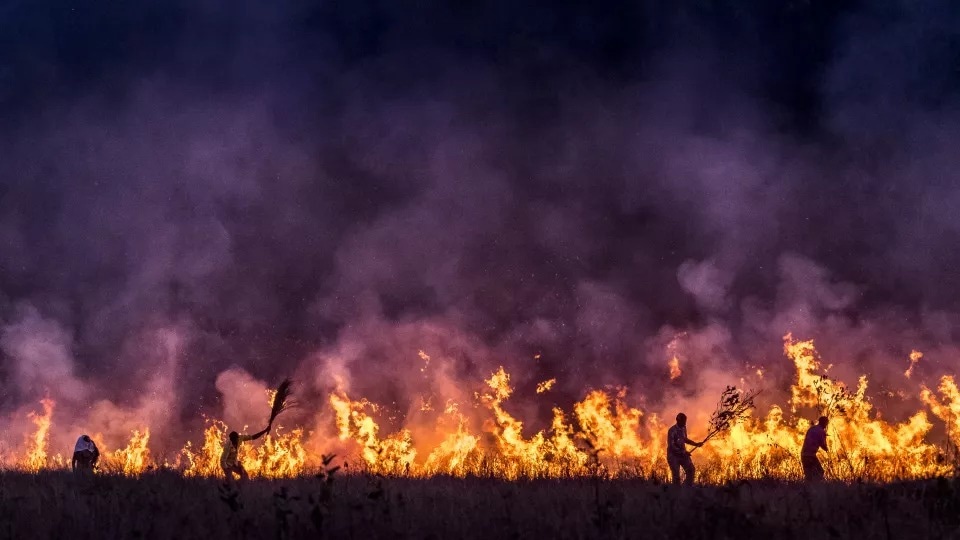Every particle that reaches the atmosphere triggers distinct chemical reactions. These particles originate from a combination of natural sources like volcanic eruptions, forest fires, and pollution and emissions.
 Climate change and modern forestry methods result in more forest fires. Image Credit: iStockphoto.
Climate change and modern forestry methods result in more forest fires. Image Credit: iStockphoto.
Johan Friberg, an aerosol researcher, studies particles found at high altitudes. He expresses concerns about the worldwide surge in forest fires potentially exerting a substantial influence on the ozone layer.
I study the air in the stratosphere and the upper part of the troposphere. I want to try and explain variations in the prevalence of aerosol particles, and I have recently become interested in the stratospheric zone.
Johan Friberg, Researcher, MERGE (ModElling the Regional and Global Earth system), Lund University
The troposphere, the lowest layer of Earth's atmosphere, encompasses three-quarters of the total atmospheric mass, encompassing nearly all water vapor and aerosol particles.
The dynamic systems responsible for various weather patterns take shape within the troposphere. The stratosphere lies beyond the troposphere, approximately 15–50 km above sea level. This layer includes the ozone layer, which serves, among other functions, as a shield against ultraviolet radiation (UV radiation), safeguarding Earth from its harmful effects.
What Role Do Particles Play in the Atmosphere?
Aerosol particles possess the dual capability of scattering and absorbing sunlight, leading to both cooling and warming effects on the climate. Furthermore, they play a pivotal role in cloud formation, as water requires particles to condense into cloud droplets. This, in turn, exerts an influence on Earth's radiation balance.
In the lower layers of the troposphere, clouds develop around these particles, causing them to eventually descend as precipitation. However, precipitation does not occur in the stratosphere, and particles instead follow air currents, dispersing across the globe within this layer.
In the stratosphere, the aerosol particles affect the ozone, causing it to break down and making the protective layer thinner. This was plain to see after the largest volcanic eruption in the modern age, from Pinatubo in 1991. The eruption emitted millions of tonnes of particles into the stratosphere, where they remained for several years.
Johan Friberg, Researcher, MERGE (ModElling the Regional and Global Earth system), Lund University
Humans Create Freons
Stratospheric ozone depletion is primarily attributed to activating freons, synthetic substances of human origin, into ozone-depleting compounds. While freons do not exist naturally, widespread human emissions have distributed them throughout the stratosphere.
The formation of significant ozone holes occurs over Antarctica due to the extreme cold in the polar region during winter. Specialized clouds known as mother-of-pearl clouds emerge in this area, featuring ice crystals on which freon activation occurs at a much-accelerated rate compared to the surrounding air.
Like mother of pearl clouds, particles from forest fires and volcanic eruptions can activate freons. They can also affect the number of ice crystals in the cloud and therefore ozone depletion. The combination of these two factors leads to holes in the ozone layer and more UV radiation reaching us.
Johan Friberg, Researcher, MERGE (ModElling the Regional and Global Earth system), Lund University
The Effect of Forest Fires Should be Studied Further
Following the Australian fires in 2019 and 2020, there was a decline in ozone concentration in the Southern Hemisphere, leading to the emergence of ozone holes beyond the polar areas. If such fires were to occur in the Northern Hemisphere, the repercussions of reduced protection against harmful UV radiation would be far-reaching, affecting billions of people, as well as ecosystems and crucial agricultural output.
Much of the existing research relies on satellite data, which is well-suited for examining the recent past. However, when looking back to events like the significant volcanic eruption of 1991 and further into the past, there is limited available data for analysis.
Johan Friberg is eager to delve further into the past with more comprehensive research to better understand the potential consequences of the rising frequency of global forest fires. The increase in forest fires is attributed to multiple factors, including climate change and practices associated with modern forestry methods. Friberg aims to meticulously examine these factors to ascertain their collective impact.
“There are still many unanswered questions and more to explore at a detailed level. We do not know how much previous forest fires have affected the ozone layer, which is why more research is needed,” Friberg concludes.